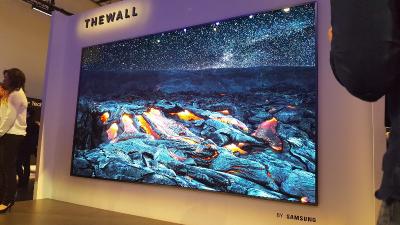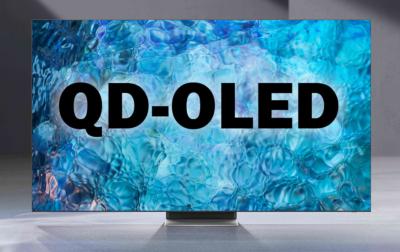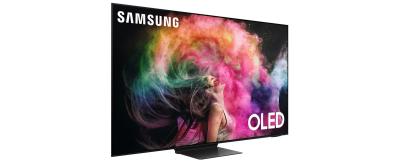In 2019 Samsung Display announced its decision to invest $10.85 billion in QD-OLED TV R&D and production lines. A few years later, SDC started to produce panels in its first fab, mass producing TV and monitor QD-OLEDs. The company attracted several customers (Sony and Samsung Electronics for TV panels, and several companies for its monitors), and these displays have been very well received by the market.
Since 2022, Samsung has increased its production yields, and increased its production capacity, and today it produces around 40,000 substrates a month in its 8.5-Gen production line. Reviews of QD-OLED gaming monitors and TVs are very positive, with many analysts seeing QD-OLED as improving over LGD's WOLED panels in terms of image quality.
But the reality at Samsung Display's QD-OLED division, is likely not so rosy. It seems that the technology is facing both market challenges and technology challenges - which may lead to a decision by Samsung to abandon it altogether.
QD-OLEDs: market pressures from all sides?
Recently SDC decided to relocate around 500 engineers, moving them from its large-area business unit to its small-medium AMOLED unit. The company said it needs to boost its competitiveness in the small and medium display market, which may be true - but it also means that the company is de-emphasizing its large-area panel production. For some years, Samsung hesitated to commit to increasing its QD-OLED production capacity beyond its first line and its expansion in 2022.
One of the reason is that Samsung Electronics itself did not embrace QD-OLEDs fully. The company recently signed a long-term agreement with LG Display to supply it with WOLED TV panels, which is not good news for Samsung's QD-OLED unit. In addition it seems as if SDC did not manage to find customers for its QD-OLED TV panels, beyond Samsung and Sony.
QD-OLED monitors are successful, but as display makers (including Samsung, BOE, LGD, TCL CSoT, and others) are racing to build 8.6-Gen IT AMOLED production lines, it is likely that these lines will be used to produce monitor panels which puts more pressure against its QD-OLED technology.
Samsung has stated in the past that its QD-Display panel technology is its current premium display technology for large-area panels, but its future lies in microLED technology. While MicroLEDs are years away from real consumer applications, this puts more pressure on QD-OLEDs as it has always been perceived internally by Samsung as an interim technology for premium TVs.

QD-OLED technology complications
QD-OLED technology is plagued by serious technology challenges. While the basic structure of an OLED devices is very simple, a QD-OLED panel has a complicated structure - blue OLED emitters covered with quantum dots for color conversion. Depositing QDs directly on OLED emitters is not straightforward, and the inkjet printing equipment has limitations in deposition density.
Relying on blue emitters has always been one of the weak points in QD-OLED technology, as efficient blue emitters haven't been developed and commercialized yet. This means that Samsung has had to rely on stacking three blue OLED emitter layers one on top of the either, further complicating the production process.
Samsung hoped that UDC will be ready with a blue OLED emitter in 2024, but reports suggest a commercial introduction will only arrive in the second half of 2025 - and these emitters will suffer from reduced lifetimes, which may limit their adoption in TV applications and delay the introduction of a single emitter layer QD-OLED.
What the future holds for QD-OLEDs
SDC invested over $10 billion in its QD-OLED technology to date, but it doesn't seem ready to expand production capacity further. It also seem to be decelerating its QD-OLED R&D. This could make QD-OLED less relevant in the future.
It is not likely that Samsung will cease QD-OLED production altogether in the near future, but it could be that it will only keep its current production and technology capabilities without any expansion or enhancements. This will likely make QD-OLED panels less competitive with WOLEDs (TVs) and AMOLEDs (monitors) in a few years. This is a difficult decision to make.
Are you interested in understanding QD-OLEDs, WOLEDs and AMOLEDs better? The OLED Toolbox contains comprehensive technology guides, market and industry insights and analysis, and trend analysis that looks into the future of the OLED industry. The OLED Toolbox offers an unmatched resource for education and information, while also serving as an indicator of the health, growth and future of the OLED industry.
Comments
One of the most important thing is the profit forcast for QD OLED is not clear based on mLED-LCD vs OLED competition.
Scale-up/commercial production of blue can still be happening "imminently" - it's just that the customer will take longer than expected going from a commercial supply of material to a product release.





"Samsung hoped that UDC will be ready with a blue OLED emitter in 2024, but reports suggest a commercial introduction will only arrive in the second half of 2025 - and these emitters will suffer from reduced lifetimes, which may limit their adoption in TV applications and delay the introduction of a single emitter layer QD-OLED."
This doesn't jibe what Mike Hack of UDC has been saying lately, about mass production of blue being imminent.